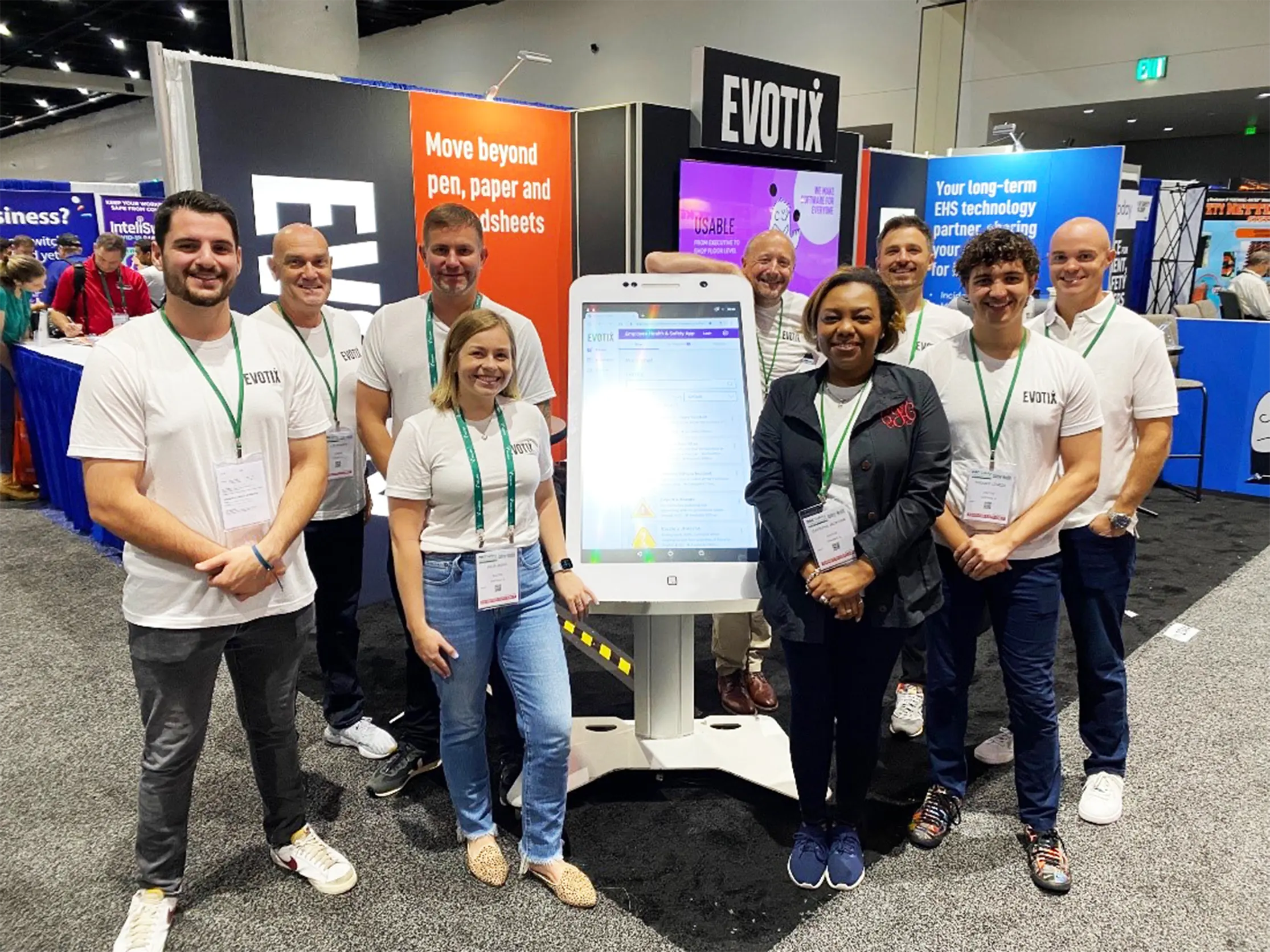Contents
Building a Safer Tomorrow: A Practical Guide to Data-Driven Occupational Health and Safety
21 November 2023 - Evotix
Occupational health and safety (OHS) management is undergoing a significant transformation due to advancements in new digital technologies. The digitalization of workplace safety presents both exciting possibilities and new challenges for OHS management.
New technologies like the Industrial Internet of Things (IoT), artificial intelligence, wearables, advanced robotics and mobile devices are becoming more prevalent in the workplace and gaining traction in OHS management. Many organizations are utilizing these cutting-edge technologies to establish streamlined and productive procedures, improving overall workforce safety and minimizing occupational risks. However, the full potential of digitalizing OHS may be hindered unless organizations adopt more data-driven methodologies and implement a strategic approach to collecting, managing and leveraging data.
What is data-driven occupational health and safety?
In occupational health and safety, a data-driven approach is characterized by the reliance on data to guide and substantiate your course of action or the formulation of intervention strategies.
Enhancing data-driven OHS is not merely about identifying problems and rectifying them. Rather, it necessitates the optimization and utilization of OHS data, laying the groundwork for seamless integration with emerging OHS technologies in the future. Organizations should proactively align their data strategies with the potential advancements in technology, fostering a dynamic and future-ready OHS framework.
Ensuring reliability and credibility in data strategy
The pandemic did not just bring to light the benefits of an organized and robust occupational health and safety system; it also exposed flaws in OHS programs and brought critical data reliability issues to the forefront. Data quality issues can erode confidence in an OHS program. Therefore, ensuring the reliability and credibility of data is crucially important.
The fundamental question, therefore, is how do we deploy these new data-hungry technologies to improve workplace safety, protect worker health and reduce occupational risks? From our perspective, achieving success in a data-driven OHS program depends on how the technology is implemented, managed and regulated.
The key steps to formulating a robust occupational health and safety data strategy:
1. Define clear objectives
Identify specific OHS objectives that align with organizational goals. Clearly articulate the desired outcomes and the role of data in supporting these objectives.
2. Identify relevant metrics
Determine the key performance indicators (KPIs) and metrics essential for measuring OHS performance. Tailor the selection of metrics to the organization's industry, size and specific health and safety risks.
3. Establish a data collection system
Implement a systematic and standardized data collection system that captures relevant OHS information. Ensure the collection process is consistent, covering various aspects of workplace health and safety.
4. Ensure data quality assurance
Institute rigorous data quality control measures to verify accuracy and completeness. Regularly audit and validate the collected data to maintain its reliability over time.
5. Prioritize data analysis capabilities
Invest in analytical tools and technologies that can process and interpret OHS data effectively. Develop analytical skills within the organization to derive meaningful insights from the collected data.
6. Foster transparency and communication
Establish clear channels for communication about OHS data, ensuring that relevant information is shared among stakeholders. Promote a culture of transparency, encouraging open dialogue about safety performance and improvement opportunities.
7. Adapt to technological advancements
Stay abreast of technological advancements in data management and analysis. Continuously update and upgrade data systems to leverage the latest technologies for enhanced OHS capabilities.
8. Anticipate future OHS trends
Proactively monitor and anticipate emerging trends and challenges in the field of occupational health and safety. Align your data strategy with evolving OHS needs, ensuring it remains relevant and responsive to changing circumstances.
In essence, data-driven occupational health and safety thrives not on reactive problem-solving but on the proactive cultivation of a strategic and forward-thinking approach to data utilization. By embracing a comprehensive data strategy, organizations pave the way for a resilient OHS framework that can evolve and adapt to the ever-changing landscape of workplace safety.
Want to learn more about how you can be proactive in strengthening your health and safety processes? Check out our blog: Safety Check: Identifying When To Revise Your Health and Safety Processes
RELATED BLOGS

Safety Check: Identifying When To Revise Your Health and Safety Processes
26 September 2023 - Evotix
Irrespective of your industry, your organization holds the vital responsibility of ensuring the safe return of your employees to their homes each day. When an incident occurs, it falls on you to..

A Farewell to Manual Processes: Why You Should Ditch Them For Health and Safety
18 November 2021 - Evotix
One of the great classics in American literature is A Farewell to Arms by Ernest Hemingway. In the title, “arms” naturally means weapons, but it got us thinking about human arms—the ones attached to..

NSC Safety Congress & Expo
5 October 2022 - Evotix
Our team has recently returned from The National Safety Council’s biggest event, the NSC Safety Congress & Expo, held this year in beautiful San Diego. The expo is held each year to help health and..
